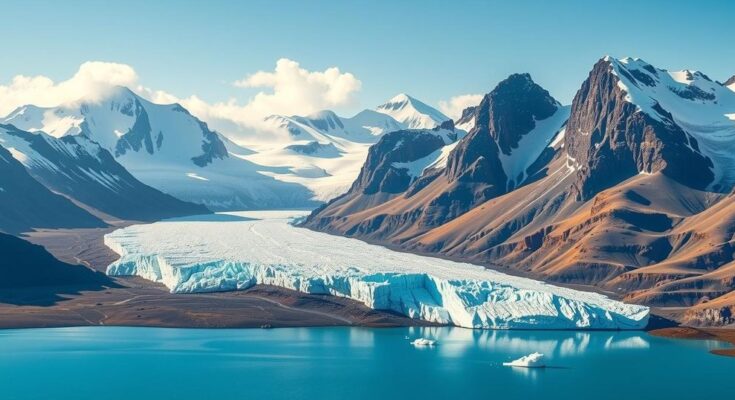Greenland’s upcoming elections have gained global attention amid U.S. interest in the territory. The major question focuses on whether to align with the U.S., remain with Denmark, or pursue independence. Despite desires for autonomy, economic dependencies complicate the aspirations for self-governance. Political factions vary in their approach, highlighting diverse opinions on the way forward.
The upcoming elections for the 31-member Inatsisartut, the parliament of Greenland, have garnered significant attention due to recent expressions of interest from the United States in the region. With a population of approximately 60,000, Greenland is an autonomous territory under Denmark, but U.S. interest, particularly from President Donald Trump, raises questions about its future status. As such, the elections on March 11 have become focal points for debates surrounding alignment with the United States, continued ties to Denmark, or a movement towards independence.
Despite ongoing discussions regarding Greenland’s future, the sentiment among the populace leans towards maintaining autonomy without becoming American. All five political parties represented in the parliament have indicated a preference against U.S. annexation. Furthermore, both Greenland’s Prime Minister Mute Egede and Denmark’s Prime Minister Mette Frederiksen have asserted that Greenland is not for sale and must determine its own destiny. A recent legislative measure prohibits anonymous and foreign donations in the electoral process.
The question remains: should a compelling offer arise, would the Greenlandic populace reconsider? Historically, U.S. interest in Greenland dates as far back as the 19th century, and its geographical proximity to North America adds a layer of complexity, especially considering the strategic significance of the U.S. air base situated on the island. Additionally, the Arctic region has become increasingly attractive to global powers due to climate change and the associated opening of new trade routes.
Greenland is often characterized by a cautious approach towards foreign investment and exploration. Despite the potential for economic opportunities, many residents prioritize the preservation of their homeland, as evidenced by the last election’s focus on limiting fossil fuel exploration and mining initiatives.
In terms of political dynamics, three of the five parties in the parliament advocate for independence from Denmark. The left-leaning Community of the People party, led by Prime Minister Egede, and the social-democratic Forward party are both positioned favorably within public opinion. Conversely, the liberal Democrats party, which seeks to maintain a union with Denmark, also displays promising polling results, complicating coalition possibilities.
Although the desire for independence is apparent, there exists a significant concern regarding living standards, largely supported by Denmark. A substantial portion of Greenland’s exports and imports are with Denmark, and a considerable segment of the population is employed in publicly financed sectors. Recently, Denmark committed 2 billion euros to bolster Arctic defenses amid increasing security concerns.
The process toward potential independence involves a series of steps: establishing a clear separation agreement with Denmark, holding a successful referendum on independence, and obtaining approval from the Danish parliament. Pro-independence factions are hopeful for a referendum within the next four years, though uncertainties persist, making the realization of such aspirations challenging before 2025.
The upcoming elections in Greenland present a critical crossroads regarding its future relationship with the United States, Denmark, or a pathway towards independence. While there is a strong sentiment towards self-determination, economic dependencies on Denmark pose challenges to achieving autonomy. As political dynamics unfold, the elections serve as a precursor to the potential direction in which Greenland may head, either leaning towards independence or maintaining its ties with Denmark.
Original Source: oilprice.com




